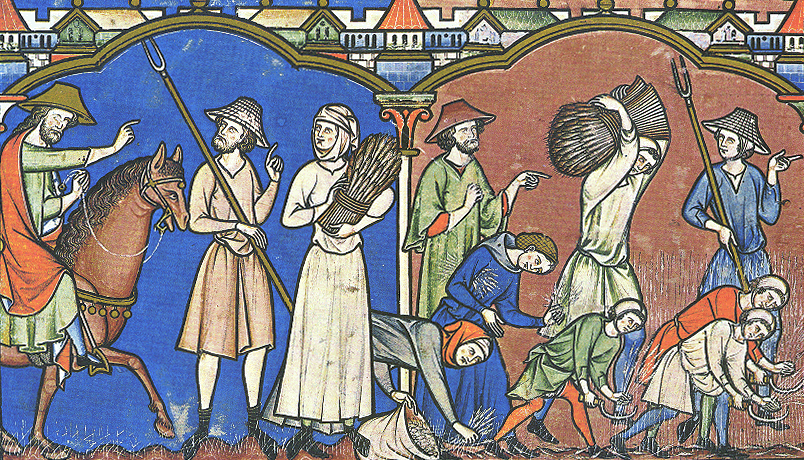adoringly sweet in one of the pictures I took, but as I try
to keep his privacy somewhat intact, I won’t post that one. Sorry.
As you
might know by now I try to save fabric (and thereby money) when I can, and so
this shirt is made from a medium coarse linen runner bought in a charity shop,
and, as I could only get the body and sleeves from out of that (by the way, industrially made linen items are not cut along a thread), some old scraps
from an old linen dress of mine that had the same quality, for the gores and
gussets. The two fabrics differ slightly in shade, but not enough to be very
noticeable. The gores are both pieced.
As usual, the shirt is hand sewn with waxed linen thread, and all seams are neatly felled. Usually I’d have hem stitched the hems, but I made the shirt too large, so B will be able to wear it next year as well, and running stitches will be quicker to take out then. The shirt might possibly be large enough for him to wear even the year after that. The sleeves have deep hems, and can be let down 4,5 centimetres, and the bottom hem can be let down 3 centimetres. It’s also cut really wide in the body and sleeves.
The Challenge: # 11
Squares, Rectangles and Triangles.
Fabric: An old linen runner, scraps from an old linen dress.
Pattern: None. I measured and cut.
Year: It would probably work for the whole Middle Ages, and likely both before and after too, but it’s intended for 14th century use. A wide, rounded neckline might have been more common, but the higher keyhole neckline protects better against sun and cold when worn closed and overlapping a bit.
Notions: Linen thread.
How historically accurate is it? Pretty much; the material, construction and stitching is all period.
Hours to complete: Maybe seven or eight.
Fabric: An old linen runner, scraps from an old linen dress.
Pattern: None. I measured and cut.
Year: It would probably work for the whole Middle Ages, and likely both before and after too, but it’s intended for 14th century use. A wide, rounded neckline might have been more common, but the higher keyhole neckline protects better against sun and cold when worn closed and overlapping a bit.
Notions: Linen thread.
How historically accurate is it? Pretty much; the material, construction and stitching is all period.
Hours to complete: Maybe seven or eight.
First worn: For the
pictures.
Total cost: 30 SEK ($4,5; £3; €3,5).
Total cost: 30 SEK ($4,5; £3; €3,5).





















